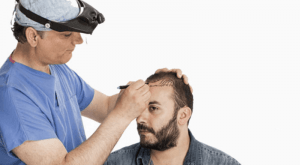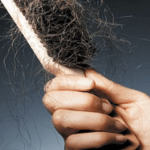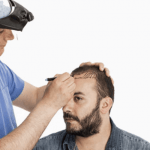Hair loss can be a real confidence killer – but it doesn’t have to be permanent. Whether you’re dealing with thinning hair, bald patches, or complete hair loss, modern hair replacement options offer promising, natural-looking results.
But before you jump in, it’s important to know what you’re signing up for – and what you need to do afterward to protect your investment.
In this guide, we’ll break down everything you should know before and after a hair replacement procedure, so you’re fully prepared and can enjoy smooth, long-lasting results.
Also Read
Before the Procedure: What You Should Know
1. Understand Your Options
There are two major categories of hair replacement:
- Surgical hair transplants (like FUT or FUE)
- Non-surgical hair systems (wigs, weaves, or mesh integration)
Each option has pros and cons. Surgical options are more permanent but require downtime. Non-surgical methods are less invasive but may need more maintenance.
Tip: Consult a certified hair restoration specialist to determine which method suits your needs, lifestyle, and budget.
2. Evaluate Your Expectations
Hair replacement can work wonders – but it’s not instant magic. It takes months for transplanted hair to grow fully, and the results vary from person to person. Manage your expectations and trust the process.
3. Check the Credentials
Do your homework! Look for clinics or specialists with:
- Proven experience in hair restoration
- Real before-and-after patient photos
- Positive reviews and testimonials
A great surgeon or technician can make all the difference.
4. Get a Health Check-Up
Your hair loss may be caused by:
- Hormonal imbalance
- Thyroid issues
- Poor nutrition
- Stress
Make sure these factors are under control before investing in any hair procedure.
5. Prepare Mentally and Financially
Hair restoration isn’t cheap, especially surgical options. It’s an investment in your confidence – so budget for it and be ready to follow the necessary aftercare for the best results.
After the Procedure: Essential Recovery Tips
1. Sleep with Your Head Elevated
For the first few nights, sleep in a semi-upright position. This helps reduce swelling and protects new grafts or applied systems. Use 2–3 pillows or a recliner.
2. Hands Off the Scalp!
Itching, tingling, or tightness is normal – but resist the urge to touch, scratch, or pick at your scalp. Touching the treated area can dislodge grafts or introduce infection.
3. Skip the Alcohol & Smoking
For at least 48 hours post-surgery (or longer), avoid alcohol and smoking. These restrict blood flow and can delay healing or reduce hair growth success.
4. Wash Gently
You’ll usually need to wait a few days before shampooing your hair. When you do, use:
- Mild or medicated shampoo
- Lukewarm water
- Soft touch (no rubbing or scrubbing)
5. Avoid Heavy Exercise
Avoid intense workouts or sports for at least 7–10 days. Physical exertion increases sweating and pressure on the scalp, which can impact healing.
6. Stay Out of the Sun
Your scalp is more sensitive than usual. Always wear a hat or protective cover when heading out, especially during peak UV hours.
7. Follow-Up Appointments Are a Must
Don’t skip your follow-up visits. They help ensure:
- Proper healing
- Early detection of complications
- Long-term success of your hair growth
Bonus Tip: Be Patient
New hair won’t appear overnight. It typically takes 3–6 months for noticeable growth, and up to 12 months for full results. Patience is key!
Hair replacement – whether surgical or non-surgical – can be life-changing. But success doesn’t just depend on what happens in the clinic.
Your preparation and aftercare play a major role in achieving a natural, full-looking head of hair.
Ready to restore your hair and your confidence? Talk to a professional and start your journey toward a new you.














